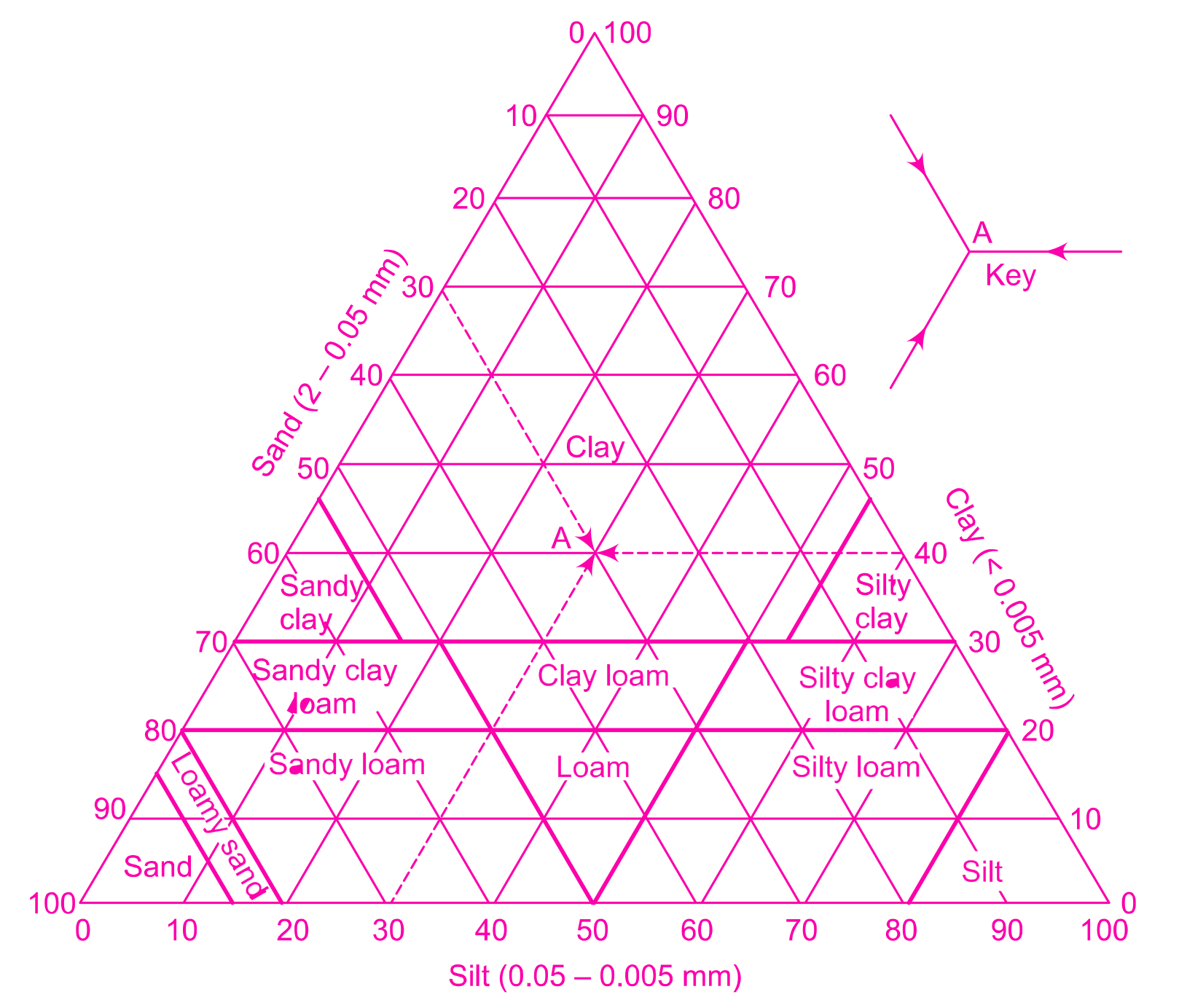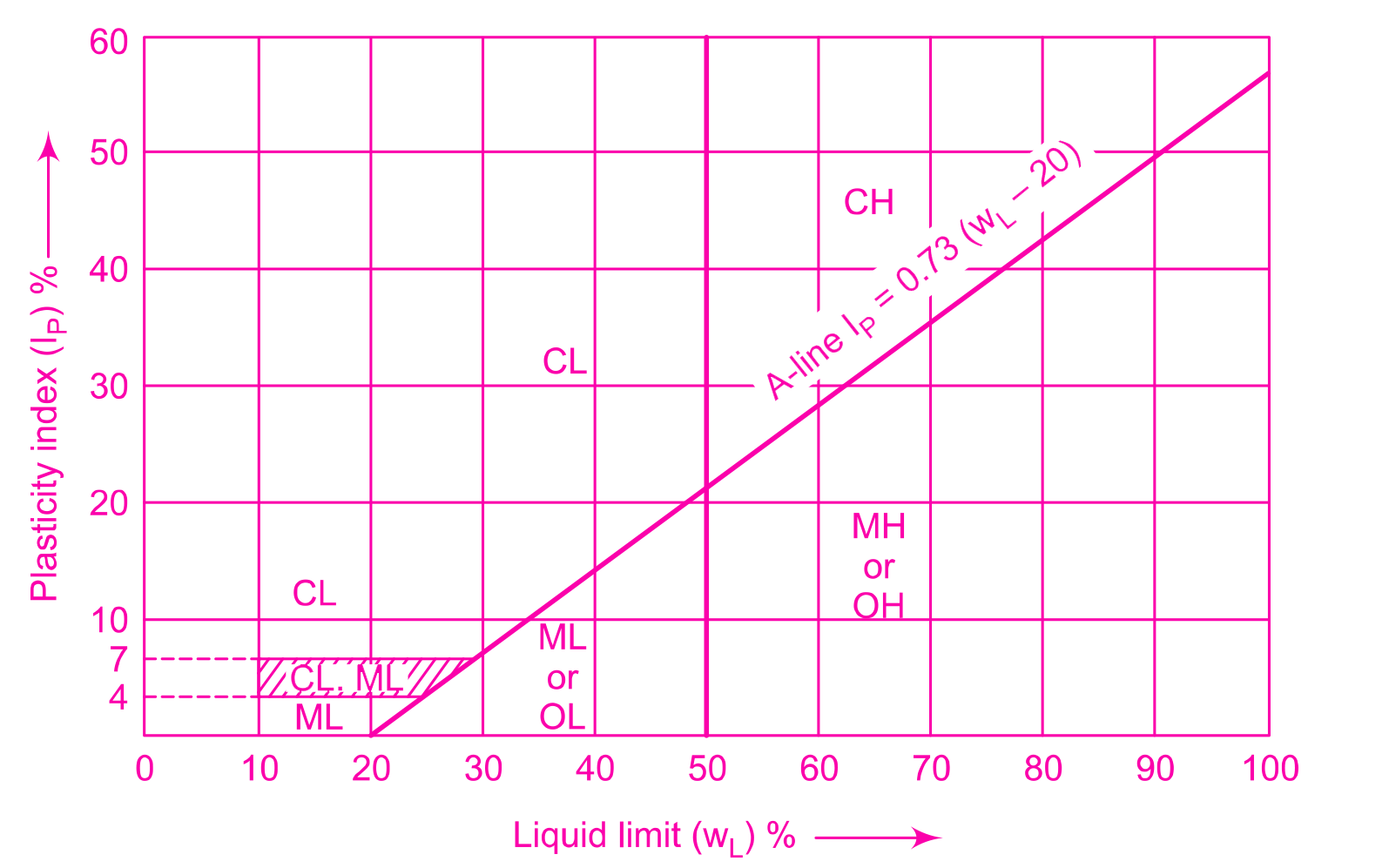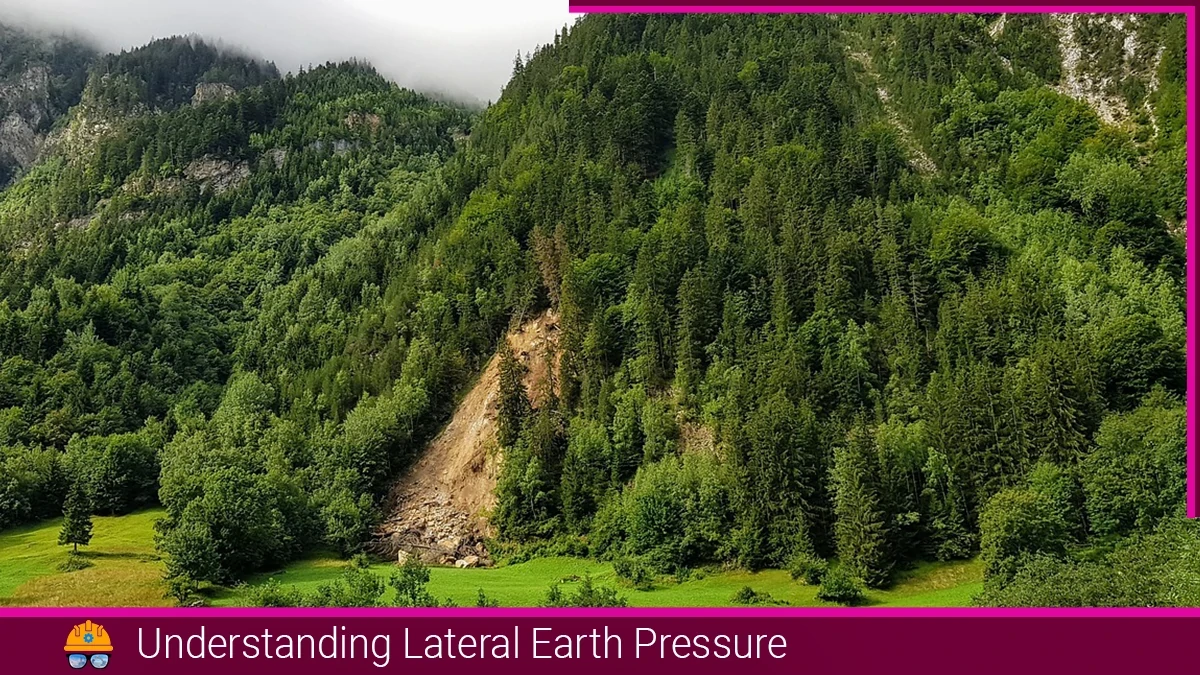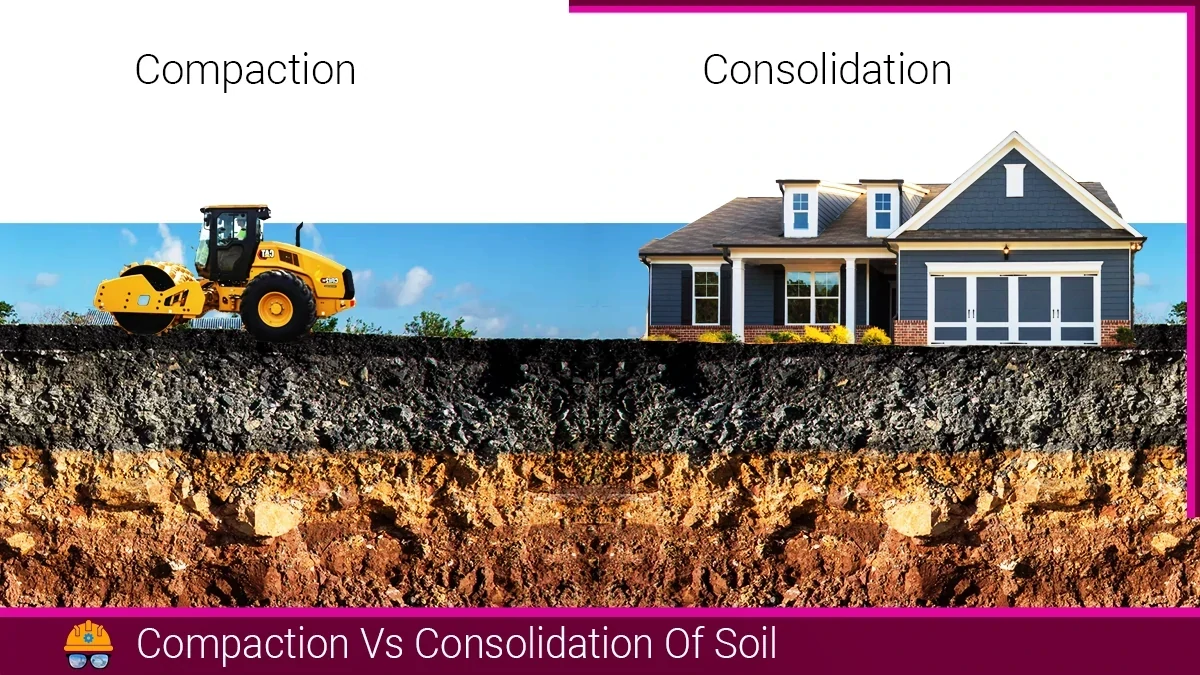Soil classification serves the purpose of grouping various soil types based on their engineering, agricultural, and other characteristics. The goal is to organize soils with similar properties into the same category. On the engineering front, classification aims to assess soil suitability for construction projects such as dams, highways, or foundations. Several systems exist for general engineering purposes to classify soils effectively.
What is Soil Classification?
Soil classification refers to the systematic categorization of soils based on their physical and engineering properties. This process is crucial for understanding how different types of soils will behave under various conditions, allowing engineers to make informed decisions in designing and constructing structures. Soil classification involves assessing characteristics such as grain size distribution, plasticity, compressibility, and shear strength. By classifying soils, civil engineers can tailor their designs to account for the unique properties of the soil at a particular construction site, ensuring the safety and stability of the built infrastructure.
Classification of Soil
For broad engineering applications, soil classification relies on specific systems designed to organize and categorize soils effectively. These systems play a crucial role in assessing and understanding soil properties relevant to construction projects, providing a structured approach for engineers.
- Particle size classification
- Textural classification
- Highway Research Board (HRB) classification
- Unified soil classification system
Particle Size Classification
Particle size classification of soil is a fundamental aspect of soil classification in geotechnical engineering. It involves categorizing soils based on the size of individual particles present in a given soil sample. Terms such as gravel, sand, silt, and clay to denote the respective sizes of soil particles. It’s important to note that these terms serve as designations for particle sizes and do not represent naturally occurring soil types. In reality, soils consist of mixtures of particles with varying sizes, each displaying distinct characteristics.
| Soil Type | Min. (mm) | Max. (mm) | Description |
|---|---|---|---|
| Clay | 0.002 | Very fine-grained soil with cohesive and plastic properties; feels sticky when wet. | |
| Silt | 0.002 | 0.063 | Fine-grained soil with smooth, flour-like texture; lacks individual particle visibility. |
| Sand | 0.063 | 2 | Coarse to fine-grained soil with distinct particles; feels gritty when rubbed between fingers. |
| Gravel | 2 | 63 | Coarse-grained soil with visible individual particles; consists of rock fragments. |
- International soil classification was proposed at the International Soil Congress in Washington, D.C. in 1927

- U.S. Bureau of Soil and Public Road Administration (PRA) System of United States

- The M.I.T. classification proposed by Prof. Gilboy of the Massachusetts Institute of Technology

- Indian Standard Classification (IS 1948-1970) based on the M.I.T. system


Also, read: What Is Atterberg Limits Of Soil?
Textural Classification
Textural classification of soil is a method used to categorize soils based on the proportions of different particle sizes present in the soil. The three main soil particles are sand, silt, and clay. The relative amounts of these particles determine the soil’s texture, and soil texture plays a crucial role in influencing various soil properties, such as water retention, drainage, aeration, and nutrient availability.
The soil textural classification is typically represented using a soil textural triangle, which visually depicts the relationships between the percentages of sand, silt, and clay in a particular soil sample. The classification is based on the USDA (United States Department of Agriculture) soil texture classification system, and it includes various textural classes such as sandy, loamy, and clayey soils. The names of these classes are derived from the dominant particle size in the soil.

Highway Research Board (HRB) Classification
The Highway Research Board (HRB) classification system, also referred to as the Public Road Administration (PRA) classification system, takes into account both the particle-size composition and the plasticity characteristics of soils. This system is mostly used for pavement construction.
The Highway Research Board Classifications categorize soils into seven primary groups labeled as A-1, A-2, through A-7. Among these, Group A-1 and Group A-2 are further subdivided into subgroups. Specifically, A-1 has two subgroups, and A-2 has four subgroups.
In this classification, the group index serves as a characteristic measure to assess how soils perform in pavement construction. It doesn’t determine the placement of soil in a specific group but rather rates the soil’s value as a sub-grade material within its own group. A higher index value indicates lower quality material, while a lower value suggests better material quality.
The group index of a soil depends upon:
- the amount of material passing the 75-micron IS sieve,
- the liquid limit and
- the plastic limit
The group index is given by the equation:
Group index = 0.2 a + 0.005 ac + 0.01 bd
Where:
a = that portion of percentage passing 75 microns sieve greater than 35 and not exceeding 75
expressed as a whole number (0 to 40).
b = that portion of percentage passing 75 microns sieve greater than 15 and not exceeding 55
expressed as a whole number (0 to 40).
c = that portion of the numerical liquid limit greater than 40 and not exceeding 60 expressed as
a positive whole number (0 to 20).
and d = that portion of the numerical plasticity index greater than 10 and not exceeding 30 expressed as a positive whole number (0 to 20).
Unified Soil Classification System
First, developed by Arthur Casagrande for wartime airfield construction in 1942, the system was modified and adopted for regular use by the Army Corps of Engineers and then by the Bureau of Reclamation in 1952 as the Unified Soil Classification System (Casagrande 1948). Various soils are classified into four major groups: (i) Coarse-grained, (ii) Fine-grained, (iii) Organic soils, and (iv) Peat.
The USCS classifies soils into two main groups: coarse-grained soils and fine-grained soils. These groups are further divided into various categories based on the particle size distribution and plasticity characteristics of the soil.
- Coarse-Grained Soils:
- Gravels (GW): Soils with more than 50% of the coarse fraction retained on a No. 4 US sieve (particles larger than 4.75 mm).
- Sands (SW): Soils with more than 50% of the coarse fraction passing through a No. 4 US sieve but retained on a No. 200 sieve (particles between 0.075 mm and 4.75 mm).
- Fine-Grained Soils:
- Clays (CL): Soils with a high percentage of clay-sized particles (particles smaller than 0.002 mm).
- Silts (ML): Soils with a high percentage of silt-sized particles (particles between 0.002 mm and 0.075 mm).
- Organic Soils (OL): Soils with a high content of organic material.
- Pezzos (PT): Expansive soils with significant amounts of pumice or volcanic ash.
Also, read: What is expansive soil?
Each category in the USCS is further classified based on additional properties such as plasticity, compressibility, and other engineering characteristics. For example, the letter symbols “H” and “L” are used to denote high and low plasticity, respectively.
| Soil Type | Prefix | Sub Group | Suffix |
|---|---|---|---|
| Gravel | G | Well graded | W |
| Sand | S | Poorly graded | P |
| Silt | M | Silty | M |
| Clay | C | Clayey | C |
| Organic | O | wL < 50% | L |
| Peat | Pt | wL > 50% | H |

Indian Standard Classification System
The Indian Standard Soil Classification System (ISCS) (IS: 1498-1970), initially created in 1959, underwent revision in 1970. The updated version is largely influenced by the United States Classification System (USCS). However, a notable modification is the subdivision of fine-grained soils into three groups (low, medium, and high plasticity), in contrast to the two groups (low and high) in the USCS.
The Indian Standard Soil Classification System (ISCS) categorizes soils into 18 groups. This is an expansion compared to the 15 groups in the United States Classification System (USCS).
Soils are broadly divided into three divisions:
- Coarse-grained soil: In this group, more than half the total material by mass is larger than 75 microns IS sieve size.
- Fine-grained soils: In these soils, more than half the material by mass is smaller than 75 microns IS sieve size.
- Highly organic soils and other miscellaneous soil materials: Are characterized by high proportions of fibrous organic matter, including peat, and particles from decomposed vegetation. Additionally, soils with shells, concretions, cinders, and other non-soil materials in significant amounts are also included in this category.
Also, read: Compaction Vs Consolidation Of Soil
References:
- Punmia, B. C., & Jain, A. K. (2005). Soil mechanics and foundations (17th ed.). Laxmi Publications (P) Ltd. https://www.laxmipublications.com/servlet/lpdispinfo?offset=0&text1=SOIL+MECHANICS+AND+FOUNDATIONS&searchtype=Keywords
- Dr. Ramchandra. (2013). Reinforced Concrete Structure (limit state design). Rajsons Publications Pvt. ltd. Delhi -110006. Limit State Theory and Design of Reinforced Concrete – Dr. Ramchandra – Google Books
- Ishibashi, I., & Hazarika, H. (2015). Soil Mechanics Fundamentals and Applications. CRC Press.
- Verruijt, A. (2018). An introduction to soil mechanics. In Theory and applications of transport in porous media. https://doi.org/10.1007/978-3-319-61185-3
- Ranjan, G., & Rao, A. S. R. (2007). Basic and applied soil mechanics. New Age International.
![]()







